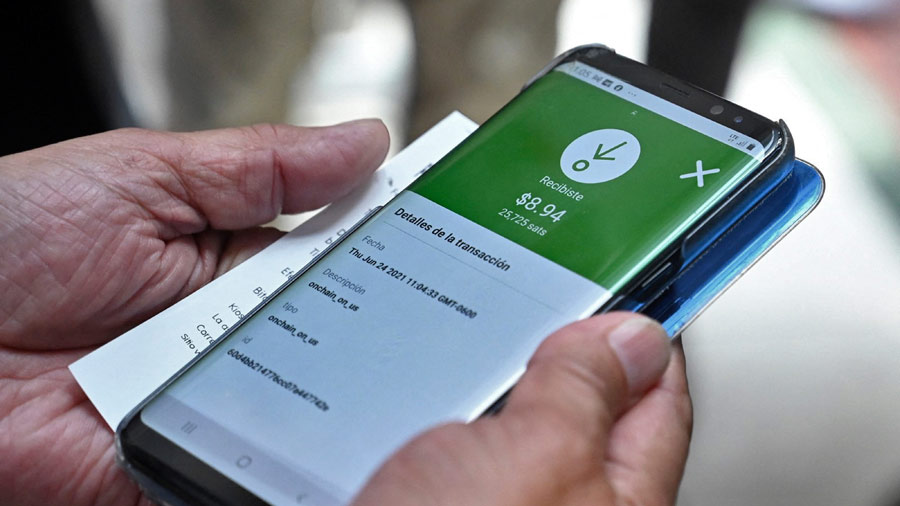
From satoshis to whales, here you will learn all the keywords of this virtual world.
The expedited approval of the Bitcoin Law in El Salvador has brought the Salvadoran an avalanche of new words that he has begun to hear, but that not all of them manage to understand. That is why El Diari d’Avui has set itself the task of compiling as many of these terms as possible that will increasingly be part of the vocabulary for understanding the world of digital currency.
Here are some of the most commonly used words and their meanings compiled by CNN and Reuters that will help you understand the language of digital currencies.
active: it is a resource with economic value that is owned in order to have a future profit. In the case of Bitcoin or any other digital currency, it is about digital assets and new goods and services based on cryptography and blockchain for their operation.
Altcoin: As Bitcoin is the most immediate reference in this sector, the word altcoin has been used to refer to alternative currencies such as Litecoin or Ethereum.
Whale: It is a term that refers to individuals who have a large amount of assets of a currency and is used because like a whale in the ocean, they can cause sudden movements in the market with their purchases or sales.
Bitcoin: Writing in capital letters in B refers to the concept of currency, while in lower case it is the unit of digital currency. In lower case, it also refers to the unit of digital currency based on the homonymous network, and can be used in the singular and plural (bitcoin and bitcoins). It is abbreviated as BTC, and sometimes as XBT, although the latter has gradually fallen into disuse. It was founded in 2008 by Satoshi Nakamoto and is the best known digital currency.
Blockchain: Also known as the blockchain, it is a key part of digital currency, as it functions as a non-modifiable “notary public” of the entire transaction system. The blockchain method prevents a virtual currency from being spent twice and ensures that payments and collections are secure. Blogs record valid transactions made with them.
Wallet or Wallet: Wallets, purses or Wallets are the tool with which users store and manage their digital currency. So one thing is digital currency and quite another wallets or purses. It’s like in real money, the currency is what you pay for and the wallet is where you keep the coins.
Wallets also store the keys or public and private addresses of each user. These keys are a key part of digital currency exchange.
Young goes viral on networks after placing junk stickers on Bitcoin in booth in San Salvador
Exchange House: it is the physical or digital place where currency exchange operations are carried out. It is organized to exchange coins between a buyer and a seller, which can be the exchange house, and a commission is charged for its purchase and sale. The price of the digital currency freezes during the time of the transaction. LocalBitcoins is an example of a exchange house.
Currency base: This is the exchange house for Bitcoin, Ethereum or Litecoin. It is based in the United States.
Cryptoactive: token or token built on cryptography, which is issued and marketed on a blockchain network.
Cryptocurrency: currency based exclusively on cryptography. Unlike coins issued by governments and central banks, it is generated with the solving of mathematical problems based on cryptography. Its value, however, is subject to price variation, depending on supply and demand in the markets.
Dogecoin: it is a digital currency that can be bought and sold as an investment and spent as money. It emerged as a prank coin in 2013 and has a very active online community that is dedicated to raising money for charitable causes.
Ethereum: is a digital platform that adopts blockchain technology and expands its use to a wide variety of applications. Ether is its native digital currency and was created in 2015 by programmer Vitalik Buterin, with the prospect of creating an instrument for decentralized and collaborative applications.
mining: is the process that computers perform to verify the blockchain.
Miners: are computers with a lot of computing power that solve very complex mathematical problems called hash puzzles. The goal of the miner is to solve the puzzle faster than the rest. The one that finishes faster verifies the next block of transactions added to the blockchain.
Some small businesses are experimenting with Bitcoin
Stablecoins: The so-called ‘stable currencies’ are digital assets linked to values such as the dollar or the peso, and therefore seek to avoid the volatility (wide variations in its price) of digital currency such as bitcoin.
Token: is a digital currency built with cryptography that depends on the blockchain of another currency to exist. They are like coins created within the system of another currency and it is usual for them to be designed with different integrated applications. The term can also refer to any digital currency in general.
Shitcoin: it refers to all those useless digital currencies that are on the market. Digital currency that were created without a definite purpose, bids with speculative prices or that simply have no use because they are a cheap copy of other projects.
Satoshi: A Satoshi is the minimum unit of measurement that can be used in the Bitcoin system. It is the smallest fraction into which you can split a bitcoin. Just as a euro is divisible by 100 cents, a bitcoin is divisible by 100,000,000 by “cents” called satoshis. Allowing to reflect balances of up to eight decimal places. Therefore, the minimum fraction of a bitcoin would be 0.00000001.
YOU CAN READ:
Government is asking for help from the BCIE to implement Bitcoin
“I will not accept Bitcoin in my business”
These are the 7 issues on which the Bukele Government has asked the BCIE for help